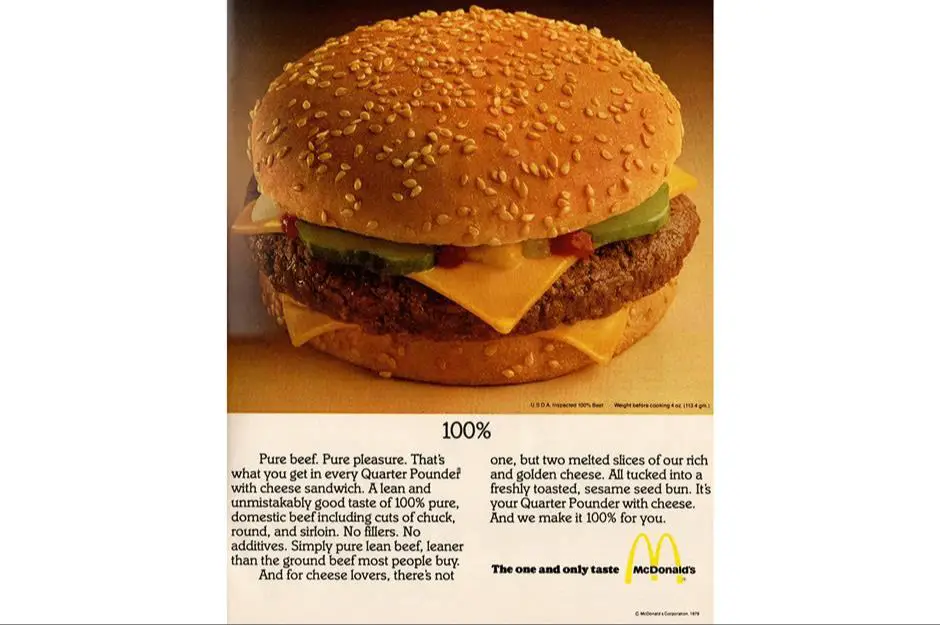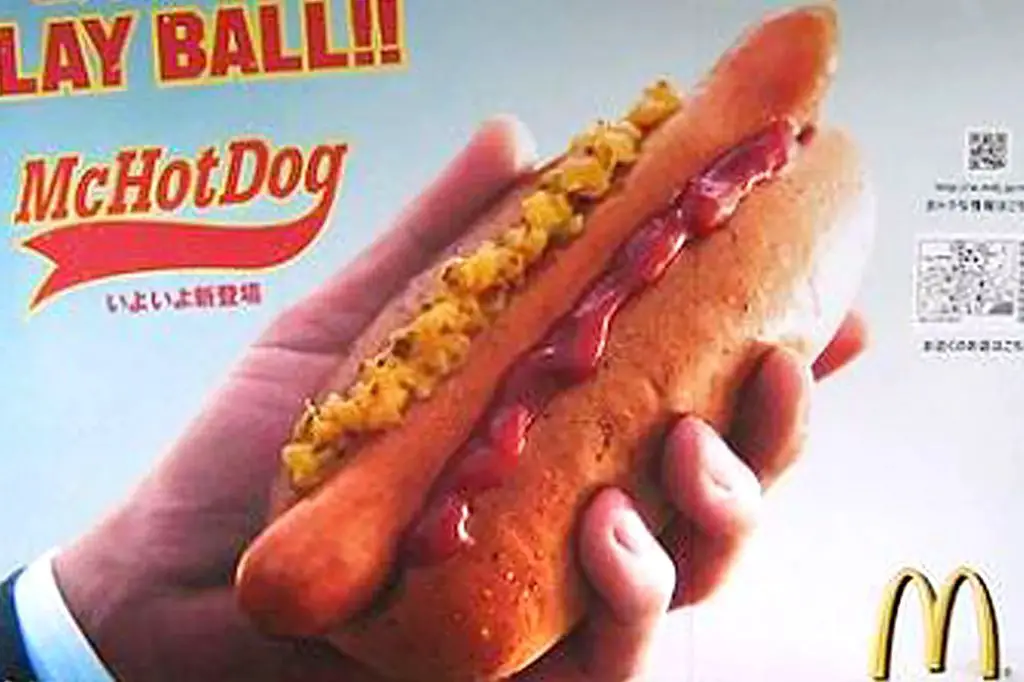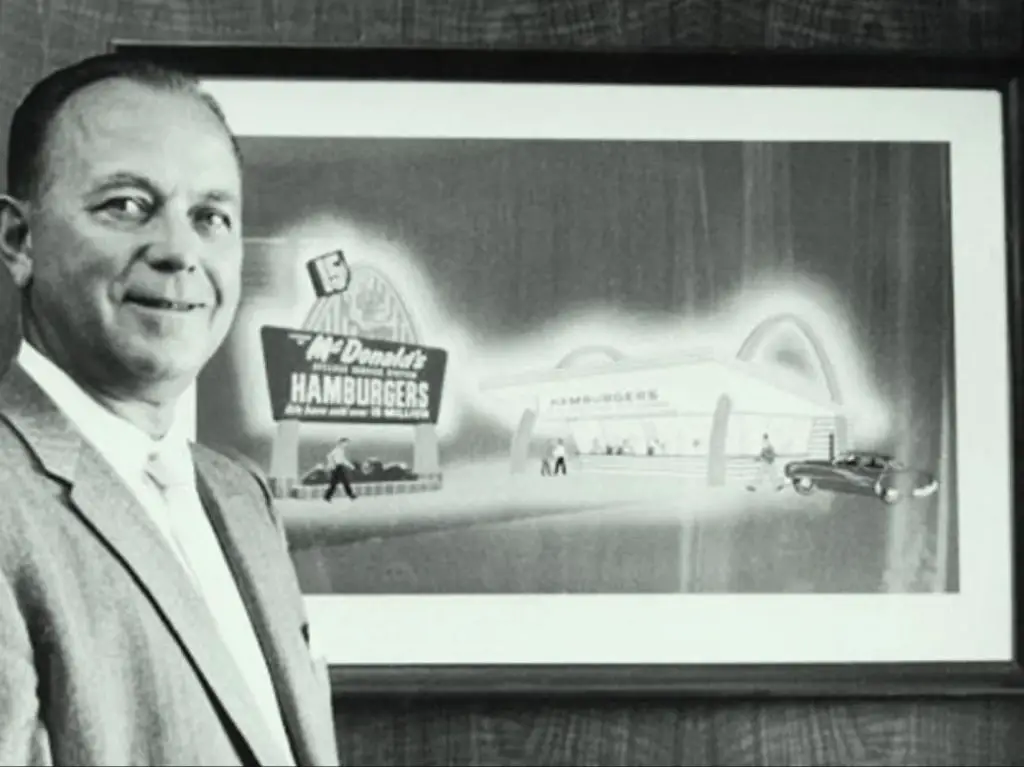The History of McDonald’s
McDonald’s was founded in 1940 by brothers Richard and Maurice “Mac” McDonald in San Bernardino, California. The original McDonald’s menu was quite limited, focusing on just a few core items.
According to The 9 Items on McDonald’s Very First Menu, the original 1940 menu featured 9 items:
- Pure Beef Hamburger
- Tempting Cheeseburger
- Triple Thick Shakes (Chocolate, Strawberry, Vanilla)
- Most Delicious Fountain Drinks
- Coffee
- Potato Chips
- Coca Cola
- Root Beer
- Full-Flavor Orange Drink

As described in Revealed—The First McDonald’s Menu Ever, the original menu focused on quick, no-frills burgers, fries, shakes, and sodas. Over time, the menu expanded to include new burgers, chicken, breakfast, and more global offerings. But the core focus on fast and affordable burgers, fries, and shakes remains to this day.
Ray Kroc and Franchising
In 1954, Ray Kroc joined the McDonald brothers as a franchise agent after being impressed by their operation (McDonald’s History). Kroc saw the potential for rapid expansion through franchising. At the time, McDonald’s was a small franchise operation with just over a dozen locations. Kroc envisioned creating a fast food empire by franchising restaurants across the country.
In 1961, Kroc purchased the company from the McDonald brothers for $2.7 million (Ray Kroc). He quickly implemented an aggressive franchising model, opening over 100 McDonald’s in 1963 alone. By focusing on rapid growth through franchising and maintaining brand consistency, McDonald’s expanded to over 1000 locations by 1967. Kroc’s vision and execution via franchising allowed McDonald’s to become a ubiquitous global brand and leading fast food chain.
The Shift to Burgers
In the early days of McDonald’s, the restaurant’s founders Dick and Mac McDonald primarily sold hot dogs and milkshakes from their original San Bernardino location which opened in 1940. However, after Ray Kroc took over the company and began franchising locations in 1955, there was a strategic shift to focus more on hamburgers.
This focus on burgers proved to be very successful. In 1967, McDonald’s introduced the Big Mac, which went on to become one of its most iconic and popular menu items. According to McDonald’s, the Big Mac was “the burger that changed it all” and helped drive the rapid expansion of McDonald’s in the 1960s and beyond [1].

Other popular burger innovations from McDonald’s over the years have included the Quarter Pounder, introduced in 1973, and the McDouble, introduced in 1996. Hamburgers now make up a significant portion of McDonald’s sales and are a key part of its brand identity.
Competition in the Burger Market
In the early days, McDonald’s biggest competitors in the burger market were restaurants like White Castle and Kewpee Hamburgers. However, as McDonald’s popularity grew, new competitors emerged. In the 1950s, Burger King was founded and became McDonald’s largest rival. Wendy’s also opened in 1969 and challenged McDonald’s with its fresh, never frozen beef.
To stay competitive, McDonald’s focused on innovation in their menu offerings and marketing tactics. In 1955, McDonald’s implemented their “Speedee Service System” which standardized food preparation and emphasized fast service. They heavily advertised this system with the slogan “15 cents for a three-course meal served in a minute and a half.” McDonald’s was also an early pioneer of brand mascots, creating the first Ronald McDonald in 1963.
Other innovations that allowed McDonald’s to compete included the Filet-O-Fish sandwich introduced in 1962 in response to declining Friday sales, and the Big Mac introduced in 1968. McDonald’s continued responding to market trends by adding breakfast items like the Egg McMuffin in the 1970s. Targeted marketing and menu customization for local tastes also helped McDonald’s compete globally. Overall, staying ahead of consumer demands and social trends allowed McDonald’s to remain the dominant force in the burger market.
McDonald’s Hot Dogs Today
While hot dogs are not currently a staple menu item at McDonald’s in the United States, some international McDonald’s locations do sell hot dogs as part of their regular menu. For example, McDonald’s restaurants in Japan have offered the ‘McHotDog’ since the 1990s as a popular menu item. In Germany, the ‘McWiener’ hot dog is a menu staple. Additionally, a few regional U.S. McDonald’s have been known to test hot dogs as a limited-time offering, such as locations in central Ohio in the 2010s.

However, company founder Ray Kroc had prohibited hot dogs at McDonald’s because he considered them to be unhygienic. So despite periodic tests, hot dogs have never become a nationwide permanent menu item at McDonald’s in the U.S. (1) This aversion to hot dogs has become ingrained in the company’s culture over the decades.
While customers cannot rely on the availability of hot dogs at their local McDonald’s in the United States, the regional and international menu differences mean McDonald’s does continue to sell hot dogs in select markets across the world. The recipes and preparation vary, with offerings including the McHotDog, Cheesy Hot Dog, and McWiener.
Impact and Legacy
McDonald’s has had an enormous impact on the fast food industry and on society as a whole since its founding in the 1950s. The chain helped pioneer the fast food model that has become ubiquitous today, with efficient assembly line production, aggressive franchising, and savvy marketing to children. Within a few decades, McDonald’s went from a single restaurant to a global empire with over 36,000 locations in over 100 countries as of 2020, serving around 68 million customers daily (Source: https://www.nrn.com/quick-service/how-mcdonald-s-became-symbol-fast-food).
However, McDonald’s success also unleashed critiques about the health impacts of fast food and the company’s role in promoting unhealthy eating habits, particularly in children. Public health advocates have blamed McDonald’s and other chains for contributing to rising rates of obesity, diabetes, and heart disease by serving high calorie food with little nutritional value. In response to this criticism, McDonald’s has diversified its menu to include healthier options like salads, wraps, and fruit. But the core of its business still revolves around burgers, fries, sugary drinks, and other high calorie fare associated with the boom in global fast food (Source: https://www.cbc.ca/news/business/how-mcdonald-s-has-shaped-the-food-biz-1.3074081).
Fun Facts
McDonald’s serves around 68 million customers daily in over 100 countries across 37,855 outlets (corporate.mcdonalds.com/corpmcd/our-company/who-we-are/our-history.html).
The original mascot for McDonald’s was a man with a chef’s hat named “Speedee.” The Golden Arches logo was introduced in 1962 (www.britannica.com/topic/McDonalds).
The Big Mac was added to the menu in 1967. Over 550 million Big Mac burgers are sold each year (www.mcdonalds.com/us/en-us/about-us.html).
McDonald’s first filed for a U.S. trademark on the name “McDonald’s” on May 4, 1961, with the description “Drive-In Restaurant Services” (www.mcdonalds.com/us/en-us/about-us.html).
The longest operating McDonald’s is in Downey, California and has been open since 1953 (www.britannica.com/topic/McDonalds).
Clearing Up Misconceptions
McDonald’s has long been the subject of competing origin myths and urban legends about how it got its start. Many of these myths focus on who should really get credit for founding McDonald’s and starting its meteoric rise. One common myth claims that McDonald’s originally served hot dogs rather than hamburgers. However, McDonald’s has always focused on hamburgers since it was founded in 1940 by brothers Richard and Maurice “Mac” McDonald in San Bernardino, California.

Another myth suggests that Ray Kroc, who acquired the rights to franchise McDonald’s and is often called the founder, actually “stole” the business from the McDonald brothers. While it’s true that the brothers were bought out for a modest sum compared to the future value of the company, they willingly made a deal with Kroc and there is no evidence of theft. Kroc expanded McDonald’s with franchisees, but the core idea came from the McDonald brothers.
Overall, while various legends add intrigue, the factual history shows that McDonald’s was always focused on hamburgers and achieved success through the combined efforts of the McDonald brothers’ initial restaurant concept and Ray Kroc’s savvy franchising model. The true story has enough drama and innovation without being exaggerated.
The Bottom Line
McDonald’s was not originally a hot dog stand, despite some popular myths suggesting otherwise. The McDonald brothers opened their original restaurant in 1940, serving mainly burgers, shakes, and fries. In 1954, Ray Kroc became involved and soon acquired the company, rapidly expanding it with his franchise model into the world’s largest fast food corporation. While McDonald’s has experimented with hot dogs regionally over the years, its core menu has always focused on burgers, fries, chicken nuggets, and other items. McDonald’s origins as a burger stand serving a simple but popular menu laid the foundation for its tremendous growth and success over decades. Although the company has evolved, burgers remain at the heart of the McDonald’s brand and business.
In summary, McDonald’s was not started as a hot dog stand, but rather quickly established itself as a burger-focused brand after the McDonald brothers opened their innovative burger restaurant in 1940s California. The story of McDonald’s being a former hot dog stand is an urban myth without evidence behind it.
Sources
Blackburn, Chris. “The Founder”: The true story of McDonald’s first CEO. Insider. https://www.businessinsider.com/origin-story-mcdonald-brothers-ray-kroc-the-founder-movie-2017-2
LeDuff, Charlie. Up Against the Wall at Mr. Ray’s Joint. The New York Times. https://www.nytimes.com/2006/12/17/fashion/17mcdonalds.html
McDonald’s Corporation. Our History. https://www.aboutmcdonalds.com/mcd/our-company/history.html
Penezic, Matt. Fact or Fiction: Was McDonald’s First a Hot Dog Stand? Snopes. https://www.snopes.com/fact-check/mcdonalds-legally-cannot-call-burgers/
Schlosser, Eric. Fast Food Nation: The Dark Side of the All-American Meal. Houghton Mifflin, 2001.
Taylor, Kate. McDonalds has a creepy way to know when you’re sad. Business Insider. https://www.businessinsider.com/mcdonalds-knows-when-youre-sad-2022-7
Vigdor, Neil. Meet the German immigrant who created one of America’s favorite foods: the hot dog. The Washington Post. https://www.washingtonpost.com/history/2019/11/02/immigrant-who-created-hot-dog-coneys-chili-dogs-corny-dogs-more/